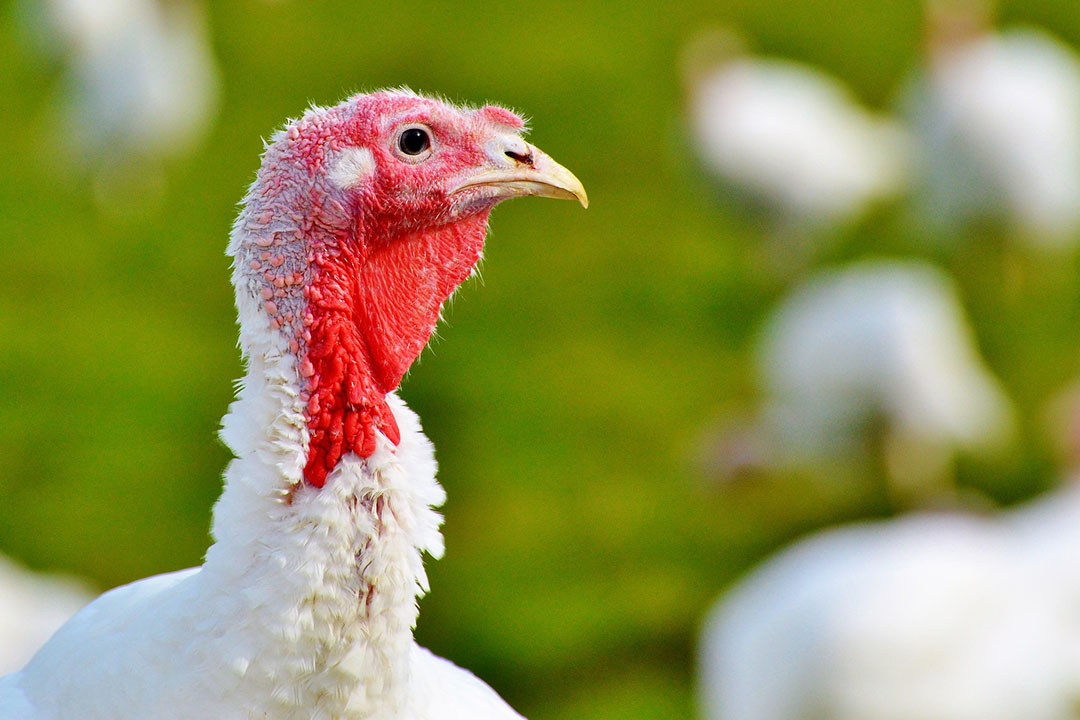
USask research helps keep your poultry happy from farm to Thanksgiving table
SASKATOON – As Thanksgiving rolls around in the United States, Americans will gobble up nearly 46 million turkeys over the holiday long weekend, just as Canadians devoured 2.5 million of the birds on this occasion in October.
In fact, Canadians consume nearly seven million turkeys as well as more than 730 million chickens annually, while the comparable U.S. tallies are 224 million turkeys and more than nine billion broiler chickens per year.
For Dr. Karen Schwean-Lardner (PhD) and her research team at the University of Saskatchewan (USask) College of Agriculture and Bioresources (Tory Shynkaruk and Kailyn Buchynski), the priority is working closely with industry partners to ensure the welfare of all poultry, including turkeys, broilers and laying hens on commercial farms.
“We look at ways to improve poultry well-being, and make their lives better while they are still on the farm,” said Schwean-Lardner, associate professor in the Department of Animal and Poultry Science.
“We hope to find usable and relatively simple strategies for farmers to utilize in their production units, by understanding what happens when we change things.”
She, along with her team and faculty partners, have been awarded a total of $647,000 through the Natural Sciences and Engineering Research Council (NSERC) Alliance grant program for three projects related to poultry welfare and productivity.
The first project, awarded $220,528 by NSERC over four years and funding of $220,529 by industry partner Evonik Nutrition & Care GmbH, aims to determine if altering the diet composition of broilers can help them cope with heat stress in summer—an issue that’s growing in importance with climate change. Dr. Denise Beaulieu (PhD), from the same department, is a co-applicant.
By studying broilers under simulated heat conditions at USask’s Poultry Teaching and Research Facility, Schwean-Lardner and Beaulieu will determine how to precisely formulate diets to deliver appropriate ratios of ingredients broilers need to grow when heat stress changes their metabolism and reduces feed intake.
“This could provide a simple and effective solution to improve bird welfare and productivity,” said Schwean-Lardner.
The second project, which studies the effects of LED light flicker on the health, welfare, productivity and condemnation levels (birds unfit for consumption) of turkey hens, received an NSERC award of $130,000 over three years. Additionally, the Canadian Poultry Research Council (CPRC) contributed $40,000, Aviagen Turkeys provided $15,000, and Turkey Farmers of Saskatchewan (TFS) invested $10,000. Dr. Trever Crowe (PhD), associate dean of the College of Agriculture and Bioresources, and professor in the College of Engineering, has partnered with Schwean-Lardner on this project.
Schwean-Lardner is an expert on the impact of lighting on bird welfare. Her doctoral research, under the mentorship of Dr. Hank Classen (PhD), established the global standard for darkness hours in poultry barns. Crowe is providing engineering expertise for the LED project.
“Our work will measure the impact—or lack of impact—on bird welfare such as fear, stress, behaviour and productivity when grown under flickering versus non-flickering lights,” she said.
If the flickers are shown to be harmful, producers can take measures to mitigate the problem, and if there’s no impact, it will alleviate producer concerns about bird welfare.
The third project, which received $296,356 from NSERC over three years, and industry contributions of $138,383 from CPRC and $10,000 from TFS, will establish acceptable temperature parameters for transport of turkeys, and may contribute to the redrafting of Canada’s codes of practice regarding humanely moving birds for processing. Crowe is a partner on this project.
“Handling, crating, vibration and noise can be stressful for turkeys, but the extremes of Canadian weather in the summer and winter are likely the most important stressor,” Schwean-Lardner said.
The transport team will place turkeys in environmental chambers for four- and eight-hour periods to simulate transportation, and change the temperature and humidity to study the effects on bird welfare and productivity. The goal is to establish upper and lower temperature exposure thresholds.
The poultry industry is adamant about improving animal welfare, Schwean-Lardner said.
“I hear often from producers that, ‘It’s the right thing to do.’ I love that phrase.”
Two master’s students and a PhD student will be trained as part of the projects.
-30-
For more information, contact:
Victoria Dinh
USask Media Relations
victoria.dinh@usask.ca
306-966-5487

